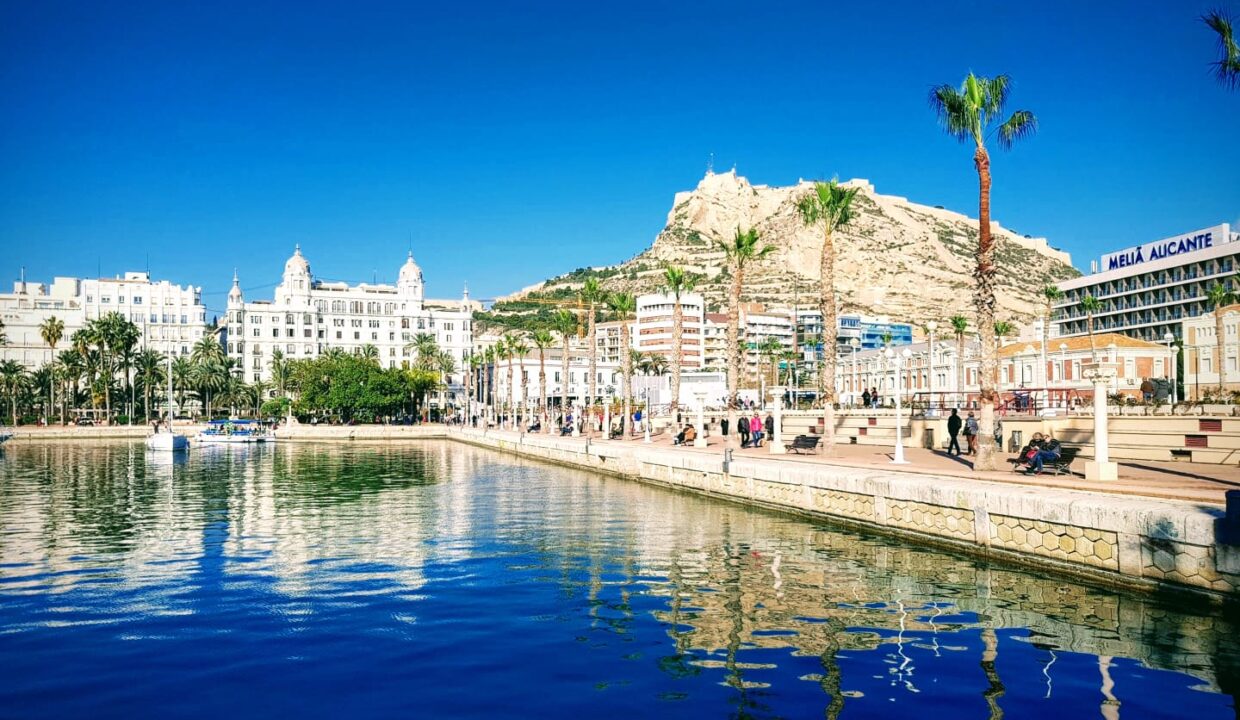
The Santa Barbara fortress in Alicante is the largest, most important fortress in the region. It is located on Mount Benacantil, at an altitude of 166 meters, right by the sea, actually in the center of the city.
The castle dates back to the ninth and eleventh centuries, when it was built by the Moors, Muslims, whose rule of the land lasted until the middle of the thirteenth century, although in fact the fortifications (less significant) on the mountain had been in place since the settlement of the ancient Greeks, in the third century B.C., and then changed hands with the land, having been in the possession of the ancient Romans, Iberians and Muslims (who first gave the castle a look more or less close to what we see today). During the Middle Ages, the castle underwent several major rebuilds, which are detailed in the paintings on display in the main building of the castle, the very same building where the elevator is located.
The name of the fortress – Santa Barbara – sounds so familiar and close for a resident of the former Soviet Union who lived through the epic epic of the eponymous series, but it has nothing to do with the series or the American city where the action took place. The name appeared here thanks to the historical events of 1248, when the Castilian (Spanish) forces under the leadership of Inafanta Alfonso of Castile, the future King of Spain Alfonso X the Wise, took the city and the fortress from the Moors. It happened on December 4, 1248, and this day on the church calendar is the day of St. Barbara, aka Santa Barbara.
The fortress is huge, with 4 levels, 2 of which were built by the Moors and two by the Christians. It was actively used for its intended purpose, built, rebuilt and improved for 1000 years: from the IX century to the XIX century, until the moment when it lost its military significance. Progress does not stand still, and the development of military technology – including: the fortress simply became useless with the development of warfare techniques and new weapons.
Between 1936 and 1939, during the Spanish Civil War, it was a large prison and concentration camp, where the local socialists first held Frankist prisoners, and then vice versa. The memory of those times remains numerous inscriptions, the names of the prisoners, carved by them on the slabs of the squares and floors.
After the war, the fortress was neglected for many years, like many other fortresses in the country: there were no resources and no energy to restore them. The fortress was reopened to the public in 1963, after which it was repeatedly restored, and as a result, the fortress is now in excellent condition.
No nobles or kings ever lived here; the fortress was always a purely military site, perfectly prepared for sieges. In time, Santa Barbara became virtually a city within a city, having everything necessary for an autonomous existence: food, gunpowder, and water stores; barracks, tavern, hospital, training grounds, a mill, a corps of engineers, the fortress governor’s house, and so on.
The castle’s observation decks offer fabulously beautiful views of the sea, the harbor and the city.

